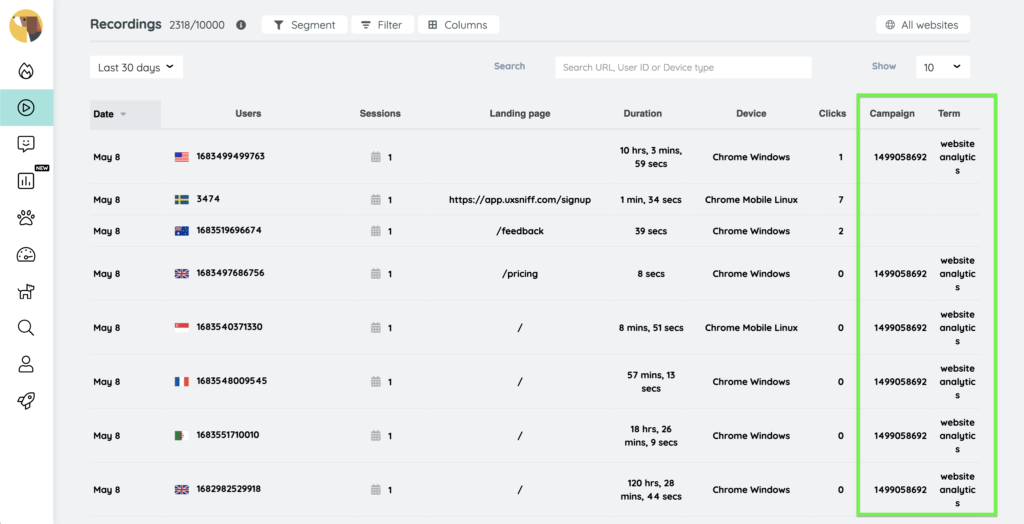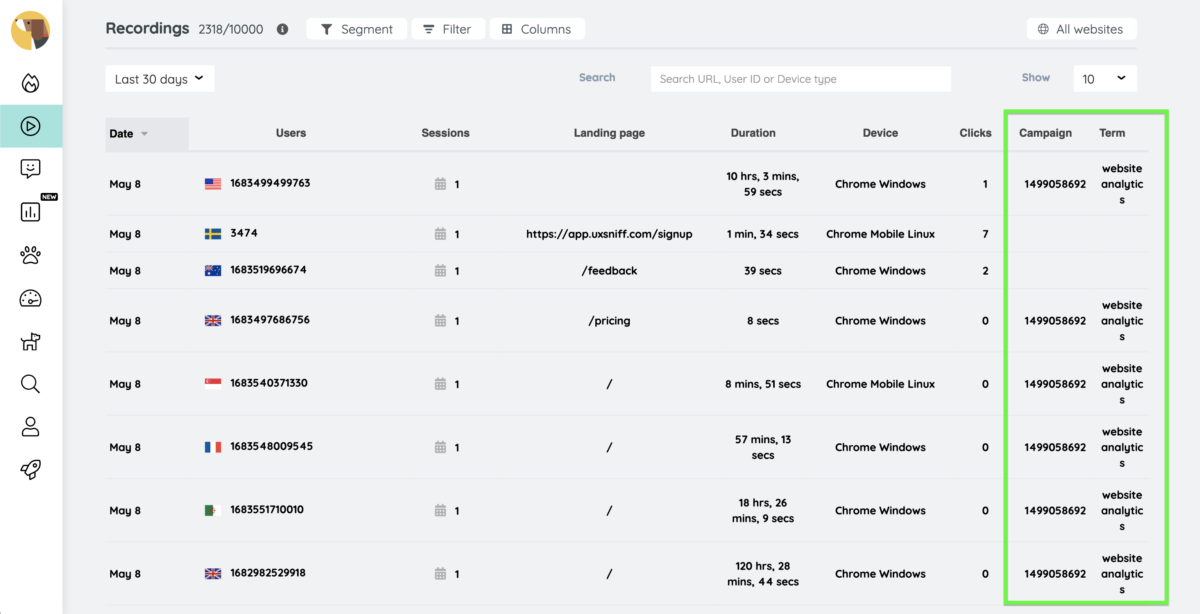The fundamental of the paid search advertising and conversion tracking algorithms are misleading sometime. Google ads algorithms could learn the wrong way according to the data collected and keep bringing junk conversions to you, and still thinking it does a great job.
The quality of conversions
Google is able to track conversion events, learn, and bring similar users who are likely to convert to some extent. However, Google cannot analyze the actual behavior and intentions of the users after the sign-up process. You play an important role in ensuring that Google learns the right things and corrects any wrong assumptions that may be consuming a significant portion of your budget on ineffective conversions.
UXsniff targets a variety of keywords and tracks main conversion events such as user sign-up, entering website URLs, installing tracking snippets, and subscribing.
To be considered a genuine UXsniff user, one must first sign up, then enter their website URL, and install the tracking snippet. However, we have noticed that the majority of users get stuck at the step of installing the tracking snippet.
What we’ve learned from session recordings

For example, one of our top spending keywords is “website analytics“. We are able to filter the session recordings on UXsniff for users who arrive from this keyword term.
After watching over 200 session recordings for users who were targeted using this keyword, we discovered that many of these users don’t actually run or manage a website. Their true intention in searching for this keyword is to perform competitive analysis. They were attempting to enter someone else’s website URL and expecting to obtain analytics results such as Similarweb.
Users are strange; they search for a keyword, click on ads, land on UXsniff, and sign up without reading or understanding that UXsniff is not a tool for analyzing any website other than their own.
Google thought this keyword is the best performing keyword and keep bringing more and more similar users because the sign-up rate is great. We ended up removing the keyword “website analytics” and replacing it with phrases like “check my website X” and “analyze my website”. Guess what? We witnessed a dramatic improvement in conversion quality, where the majority of users were actually running or managing a website.
Conclusion
You can only uncover the true reasons and understand how users are utilizing your product by observing their actions on your website. However, watching 200 recordings to gather insights is not practical. Perhaps a GPT summary of the session recordings would be a great solution.
